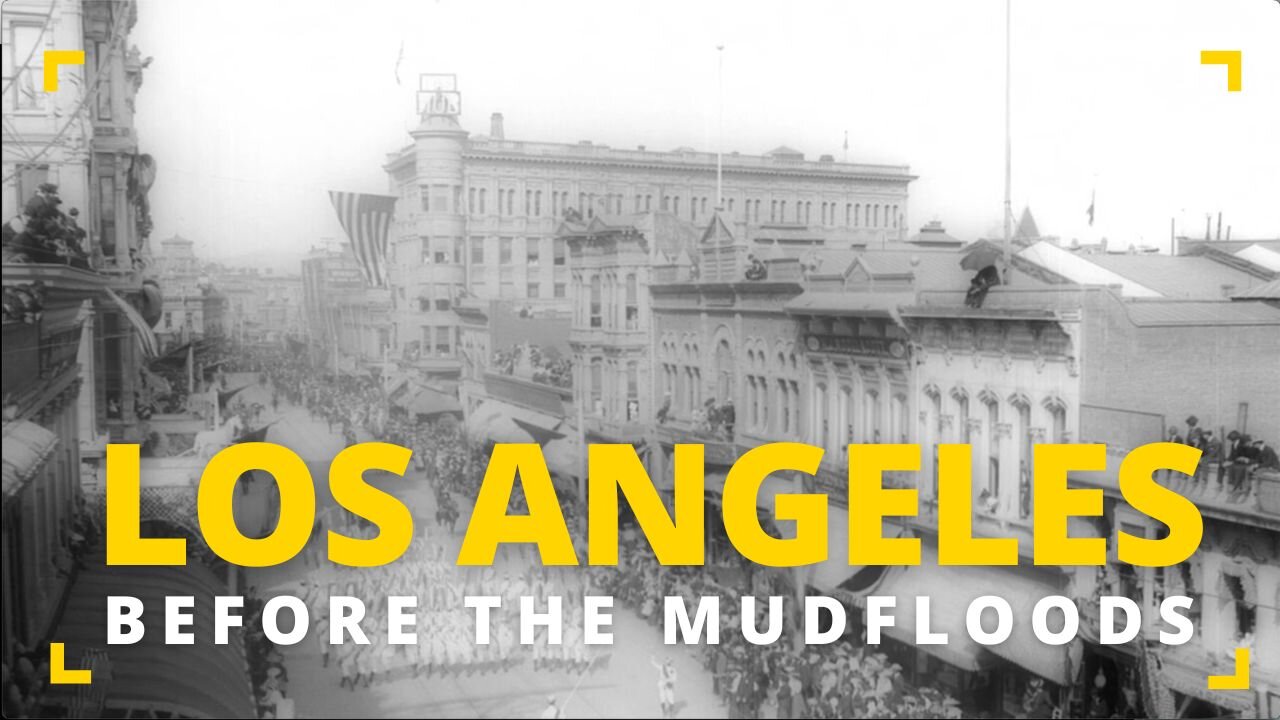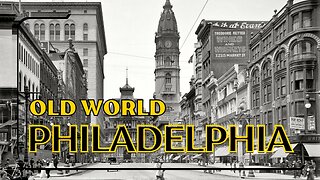Premium Only Content

Los Angeles, California BEFORE the Mud floods - 1st Photos (1864-1909)
Today we will dive into a vast collection of images, considered to be the first photographs ever taken of Los Angeles, California. Beginning the deep dive is a very intricate map detailing Los Angeles as it appeared in 1871, and we will follow this up with over 100 photographs of the fledgling city of Los Angeles from the years 1864 through 1909.
Immaculate architecture aside, the landscape is filled with unique properties, beauty both naturally occurring and man-made, and we will look at many locations of Los Angeles photographed for the first time in history. The images today are at least 115 years old, and I compiled this collection from months of research into Los Angeles; through museums, libraries, private collections and online forums dedicated to architecture.
SOURCE
Jarid Boosters
THE NARRATIVE: Los Angeles and it's Diverse History
---
1781: The history of Los Angeles began when 44 settlers from central New Spain (modern Mexico) established a permanent settlement in what is now Downtown Los Angeles.
1887: A great speculative land boom occurred, driving up the price of city land 500 percent. Monrovia became Los Angeles County's fourth incorporated city. Whittier was settled by a group of Quakers. Burbank and Glendale were incorporated.
1888: Pomona, South Pasadena, and Compton were incorporated as cities. Long Beach was also incorporated for the first time, but was disincorporated years later in 1897.
1889: After 20 years of political maneuvering, voters in the southern portion of Los Angeles County elected to break away to form Orange County, California.
1890: The U.S. Census recorded 50,395 people in the City of Los Angeles and 101,454 people for all Los Angeles County. The first Tournament of Roses Parade was held in Pasadena.
1895: The Los Angeles City Oil Field was discovered, becoming California's top-producing oil field.
THE NARRATIVE: Architectural and Infrastructure Landscape
---
SPANISH COLONIAL INFLUENCE: The early architectural landscape of Los Angeles was heavily influenced by Spanish colonial designs, reflecting its historical roots. The iconic missions, with their arched corridors and red-tiled roofs, set the stage for the city’s built environment.
LATE ADOBE, GREEK REVIVAL, STICK STYLE, SECOND EMPIRE & ITALIANATE STYLES: After California joined the union as the 31st state in 1850, buildings designed in these architectural styles began to appear. These structures represent early settlement patterns and building practices. Most of these buildings were simply constructed, using locally available materials including adobe, brick, and wood.
LUMMIS HOUSE: Charles Lummis began the construction of El Alisal, also known as the Lummis House, in 1898. Built over a twelve-year period ending in 1910, the structure was constructed by Lummis using stones gathered from the Arroyo Seco with the assistance of a few Native American laborers he had trained in carpentry.
GAMBLE HOUSE: The Gamble House, a prime example of an "ultimate bungalow" due to its large size and depth of detail, was designed by architectural firm Greene and Greene for David B. Gamble (of Proctor & Gamble). The home was constructed between 1908 and 1909.
FREIGHT DEPOT: One of the earliest local examples of reinforced concrete buildings is a quarter-mile-long former freight depot that was constructed in 1907. It now serves as the campus of the Southern California Institute of Architecture (SCI-Arc).
THE NARRATIVE: Notable Public Buildings
---
PICO HOUSE: Built in 1869 by Pío Pico, the last Mexican governor of California, Pico House was the finest hotel in Los Angeles at the time.
SANTA MONICA PIER: Opened to the public in 1909, the Santa Monica Pier quickly became a popular destination. The amusement park on the pier opened 21 years later.
OLVERA STREET: Known as the oldest street in Los Angeles, Olvera Street is home to the city’s original firehouse, church, theatre, and other buildings. These structures have been brought together as the El Pueblo Historical Park.
LUMMIS HOUSE: Also known as El Alisal, this house was built by Charles Lummis between 1898 and 1910. The structure was constructed using stones gathered from the Arroyo Seco.
-
 31:01
31:01
The Aquarius Bus
10 months agoExquisite Old World Philadelphia. Founded 1682. Why Did They Move The Capital to DC?
2.02K8 -
 26:53
26:53
Law&Crime
17 hours ago $0.08 earnedTikTok Teen Sarah Grace Patrick Sobs in Dramatic Court Meltdown
1381 -
 LIVE
LIVE
GritsGG
1 hour agoWin Streaking! Most Wins 3390+ 🧠
150 watching -
 LIVE
LIVE
Wendy Bell Radio
6 hours agoDemocrats Need Fake Data To Cover Up Their Incompetence
7,411 watching -
 4:04:43
4:04:43
The Bubba Army
1 day agoImmigrant Truck Driver.. Who's To Blame?! - Bubba the Love Sponge® Show | 8/20/25
137K9 -
 LIVE
LIVE
JuicyJohns
2 hours ago $0.55 earned🟢#1 REBIRTH PLAYER 10.2+ KD🟢
77 watching -
 32:50
32:50
Uncommon Sense In Current Times
19 hours ago $1.31 earnedIs War Ever Just? Frank Turek Explains Just War Theory & Christian Ethics
27.6K5 -
 25:57
25:57
DeVory Darkins
1 day ago $21.47 earnedNewsom suffers HUMILIATING SETBACK after FATAL Accident as Trump leads HISTORIC meeting
62.8K152 -
 LIVE
LIVE
FyrBorne
14 hours ago🔴Warzone M&K Sniping: First Impressions of Black Ops 7 Reveal
171 watching -
 8:16
8:16
MattMorseTV
19 hours ago $11.37 earnedTrump’s name just got CLEARED.
104K90